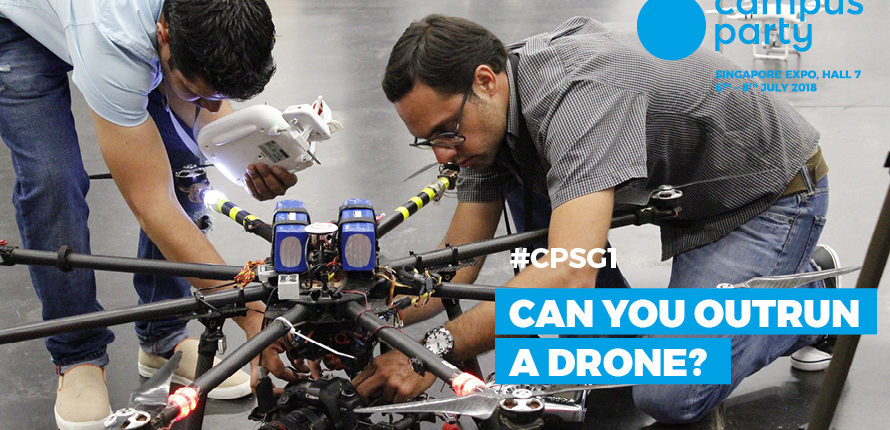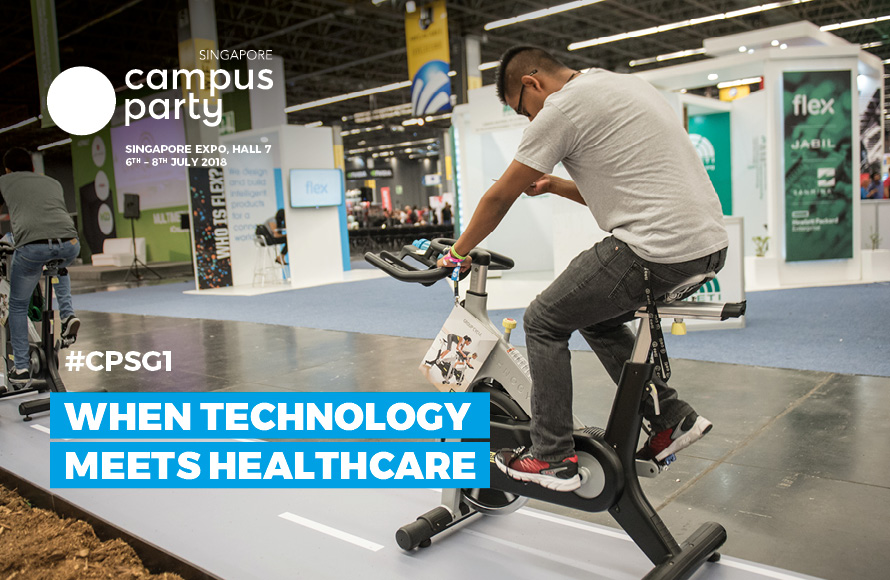Can You Outrun a Drone?
- sarahnadhirah
- Highlights
- 0 Comments

Is it a bird? Is it a plane? No, it's dynamic remotely operated navigation equipment, more commonly known as a drone. These unmanned devices are everywhere and they can do everything - from saving lives to delivering pizza.
Whether you call them Unmanned Aerial Vehicles (UAVs), Miniature Pilotless Aircraft or Flying Mini Robots, drones are rapidly growing in popularity. They are still in the infancy stage in terms of mass adoption and usage, but drones have already broken through rigid traditional barriers in industries which otherwise seemed impenetrable by similar technological innovations. 2017 was the year drones became truly mainstream, and 2018 will see drones start to form a part of our everyday lives.
Commercially, drones have proven their absolute worth, saving lives during hurricanes Irma and Harvey, reducing labour costs through infrastructure inspections and improving border security, amongst others. Commercially, the possibilities are limitless. While most people think of drones as either sophisticated military technology or a hobbyist’s tool for capturing images of foliage, sporting events, and cityscapes, businesses are realising that drones have multiple commercial applications, some of which go beyond basic surveillance, photography, or videos, and they are already using them to transform daily work. Insurance companies are using drones to inspect damaged assets, for instance, and farmers are sending them to monitor crops and collect soil data. Even more dramatic changes could be in store as innovators explore new uses, including drone-delivery services for retail stores and air taxis for commuters.
But here’s the thing - as drones have taken off in popularity, the number of problems associated with drones is also on the rise. As with so many other technologies, entry into the consumer market has led to abuse: pranksters spying on neighbours, criminals smuggling drugs and terrorists converting drones into homemade missiles.
For those of us who truly understand, though, one thing remains - seeing the world from above is a metamorphic experience. A leafless tree becomes a spider web, a circus transforms into a box of sweets, while a harvest field simplifies into slashes of flaxen and gold. And it is with this insurmountable passion for the all things positive that drone technology can bring to the world that forms the core of what Skydio does – making flying tools to free up our hands, and mind.
An autonomous drone startup based out of Redwood City, California, Skydio believes in building intelligent machines that bring the creative capacity of software to life in the physical world is the opportunity of a generation; a future where they multiply human creativity and human possibility. With its goal of constantly push the boundaries of what’s possible in this new world, this means imagining and building beyond what’s possible today, and looking for opportunities to do new useful things for people.
The brainchild culminating from lifelong passions of co-founders who grew up steeped in aviation, robotics, and storytelling - Abraham Bachrach and Adam Bry, they met as graduate students at MIT, where they helped pioneer autonomous flight using onboard sensors (both had previously worked at Google together). The inspiration for starting Skydio came from the enormous gap between the imagined promise of drones and what existing manually-flown products are capable of. From early on it was clear that getting to a compelling fully autonomous product would mean building hardware and software from the ground up - ambitious and challenging, but also a lot of fun.
Skydio’s team now includes world experts spanning AI, robotics, and consumer hardware products from places like Google, Apple, Tesla, and Oculus.
In February this year, Skydio unveiled a product today that it’s been working on for four years. The R1 is an artificial intelligence-powered quadcopter capable of shooting 4K video of a subject and maneuvering complex environments all on its own. Using industry advancements in AI to help train a custom computer vision system, Skydio developed a product that’s effectively the first professional-grade drone that can be flown without any expertise whatsoever. In fact, the R1 doesn’t even come with a controller because in almost every situation imaginable, the drone should fly itself. It’s a dream quite a few startups have tried and failed to deliver: full autonomous drone flight that is both safe and robust at high speeds and in busy environments. Until today, few companies, beyond drone heavyweight DJI, have come even remotely close. Most drones today, including both cheap entry-level units and multithousand-dollar rigs designed for professional use, involve by default a manual system using an external controller, which relies on at least a bit of know-how to operate.
Skydio’s R1, on the other hand, uses 13 onboard cameras to do real-time mapping, path planning, and obstacle avoidance. A Nvidia Jetson TX1 computer, used mainly as the brain of prototype self-driving car systems, is used for onboard processing. Skydio’s software combines all that data with built-in algorithms trained to recognize humans and other distinct objects like trees and cars. That way, the drone is able to avoid dangerous elements in an environment and follow a user through a variety of terrains and situations, from skis slopes to mountain bike trails.
It’s a dream quite a few startups have tried and failed to deliver: full autonomous drone flight that is both safe and robust at high speeds and in busy environments. But few companies, beyond drone heavyweight DJI, have come even remotely close. Most drones today, including both cheap entry-level units and multithousand-dollar rigs designed for professional use, involve by default a manual system using an external controller, which relies on at least a bit of know-how to operate.
Bry says: “Skydio is less about the experience of manually flying drones and much more about the content that you can create. There are always going to be people who enjoy flying, which is great. But our bet is that there are a lot of people who are excited about what a drone can do, but who are more excited about what it can do for them.”
Learn more on Skydio's R1: The Self-Flying Camera by watching this video: https://www.youtube.com/watch?v=gsfkGlSajHQ
What if you could completely free up your mind, and your hands, through piloting your own autonomous flying drone, a state-of-the-art flying machine that is able to follow you wherever you go, without the physical need to control them? In many ways, Skydio represents the true future of drone technology – enabling freedom.
"This isn't a small step up in tracking and following technology, this is a quantum leap." - Casey Neistat
Rub shoulders with the Skydio team at Asia’s first edition of Campus Party - ticketing and registration information is available at https://singapore.campus-party.org/. Also visit Campus Party Singapore’s social platforms at



